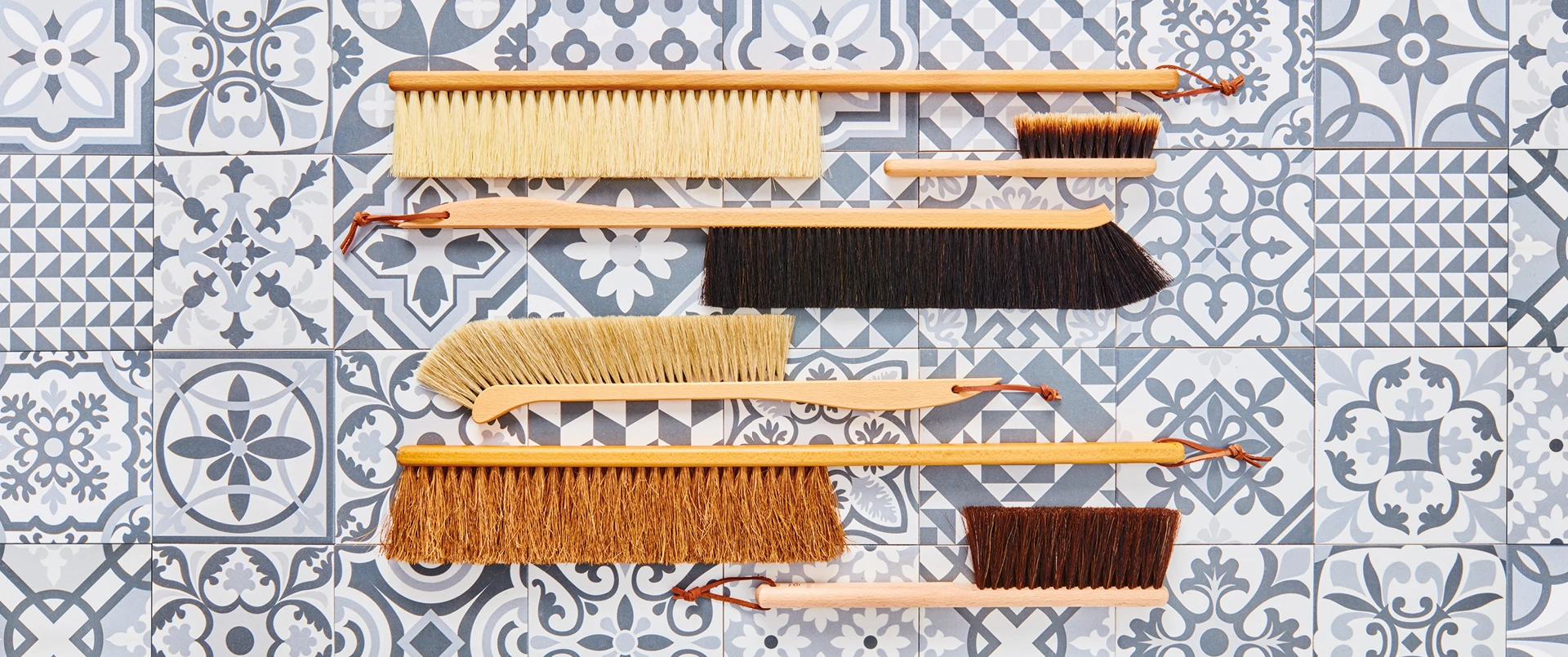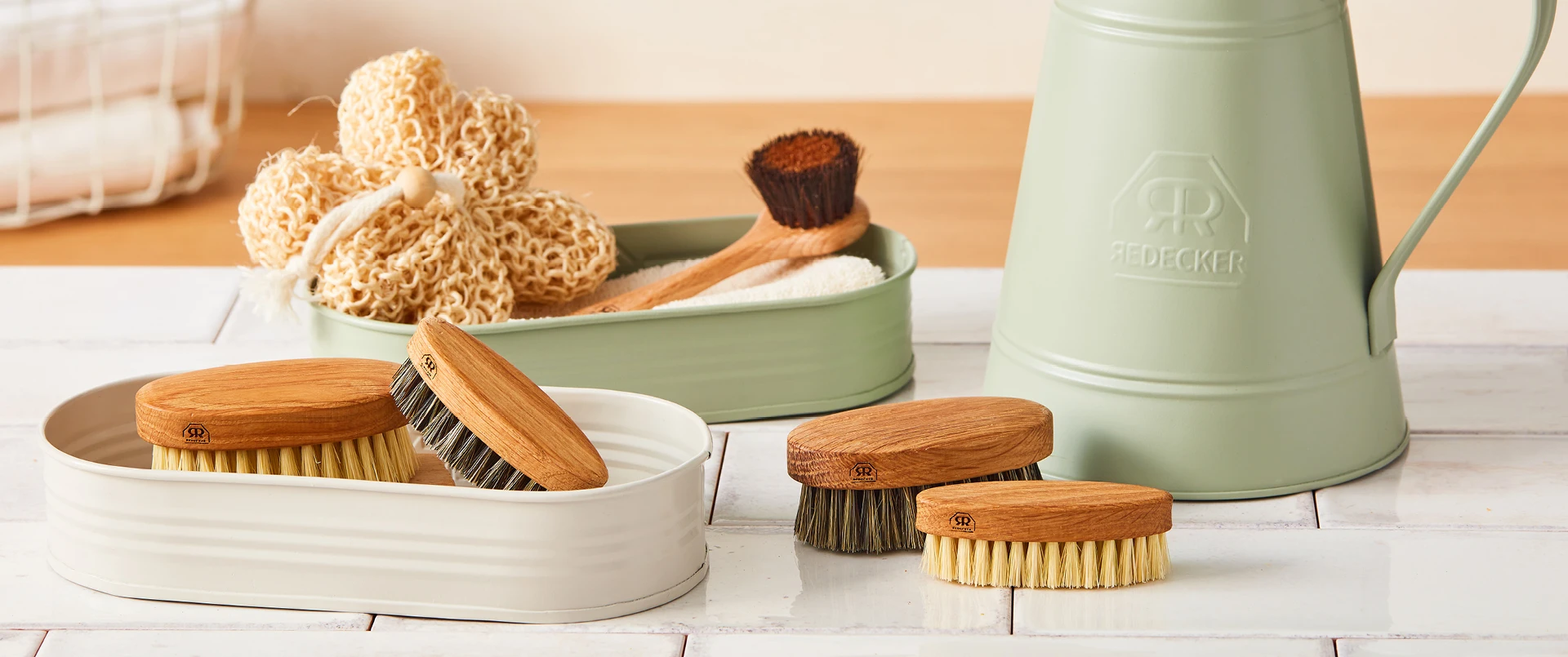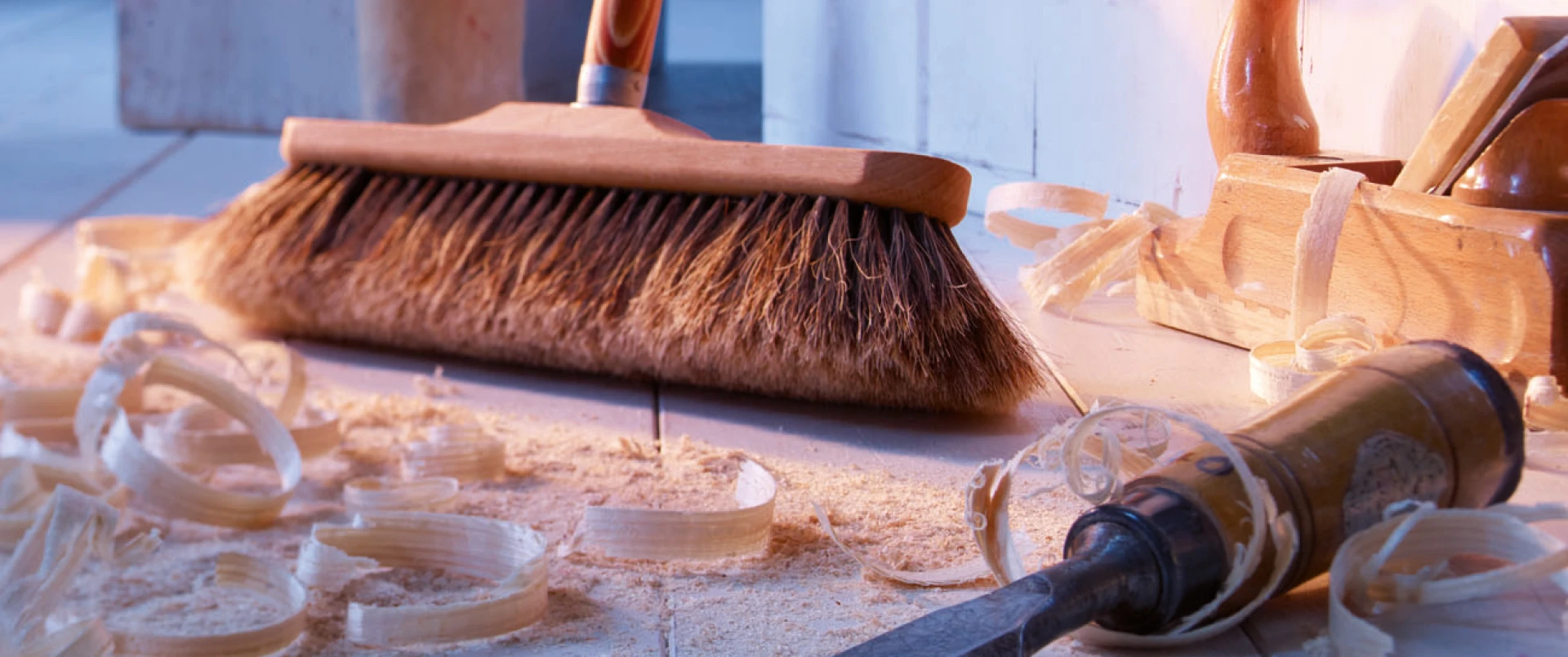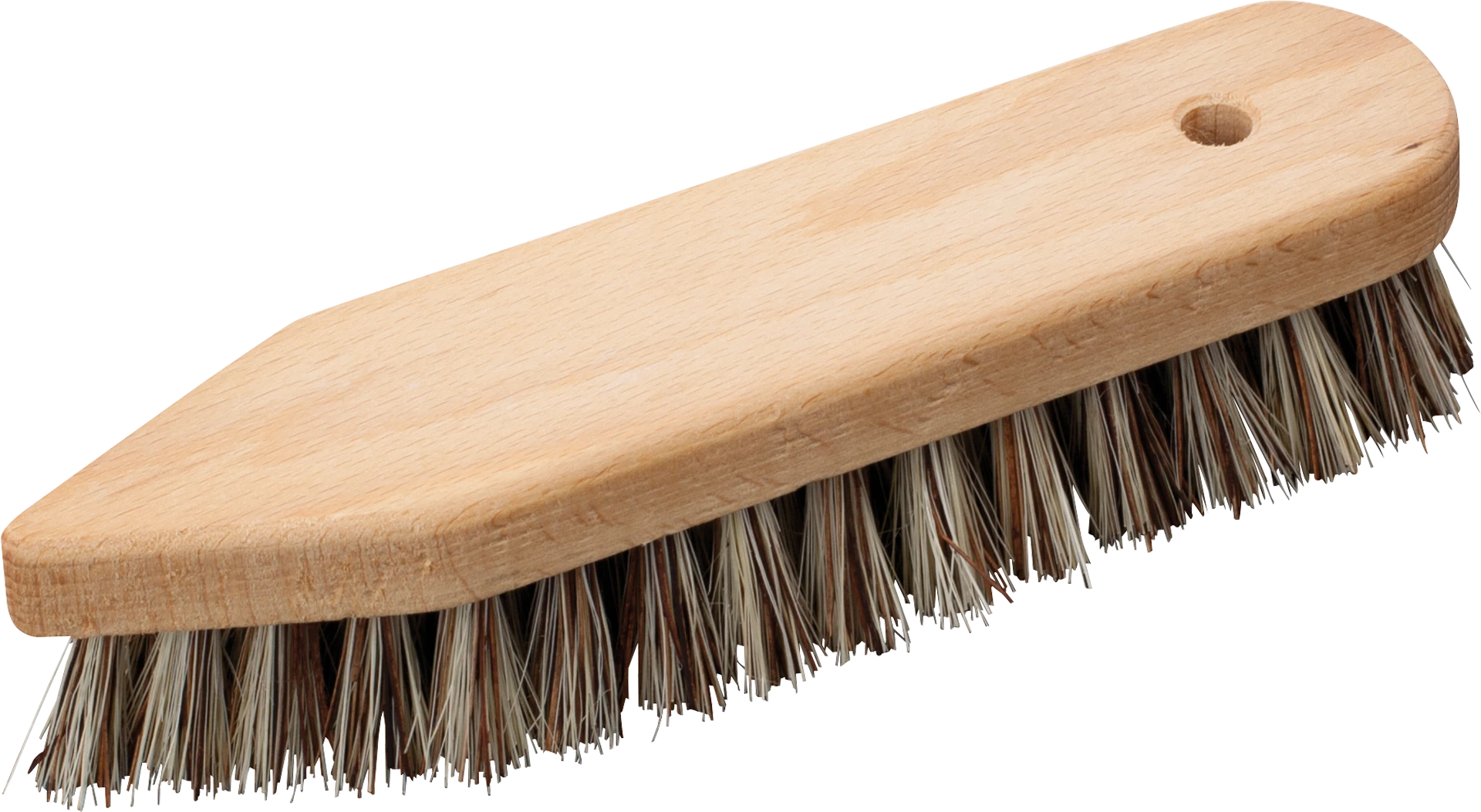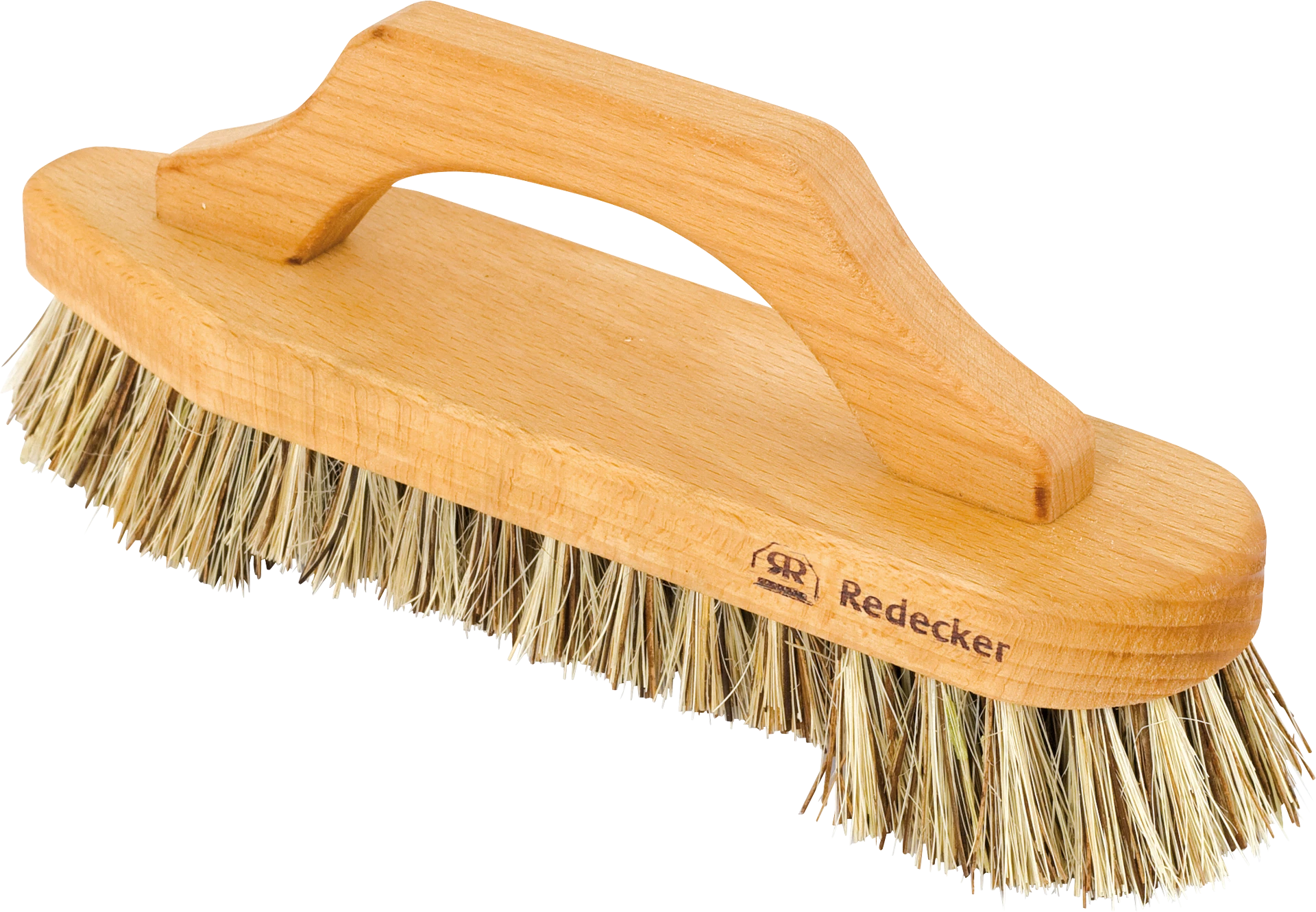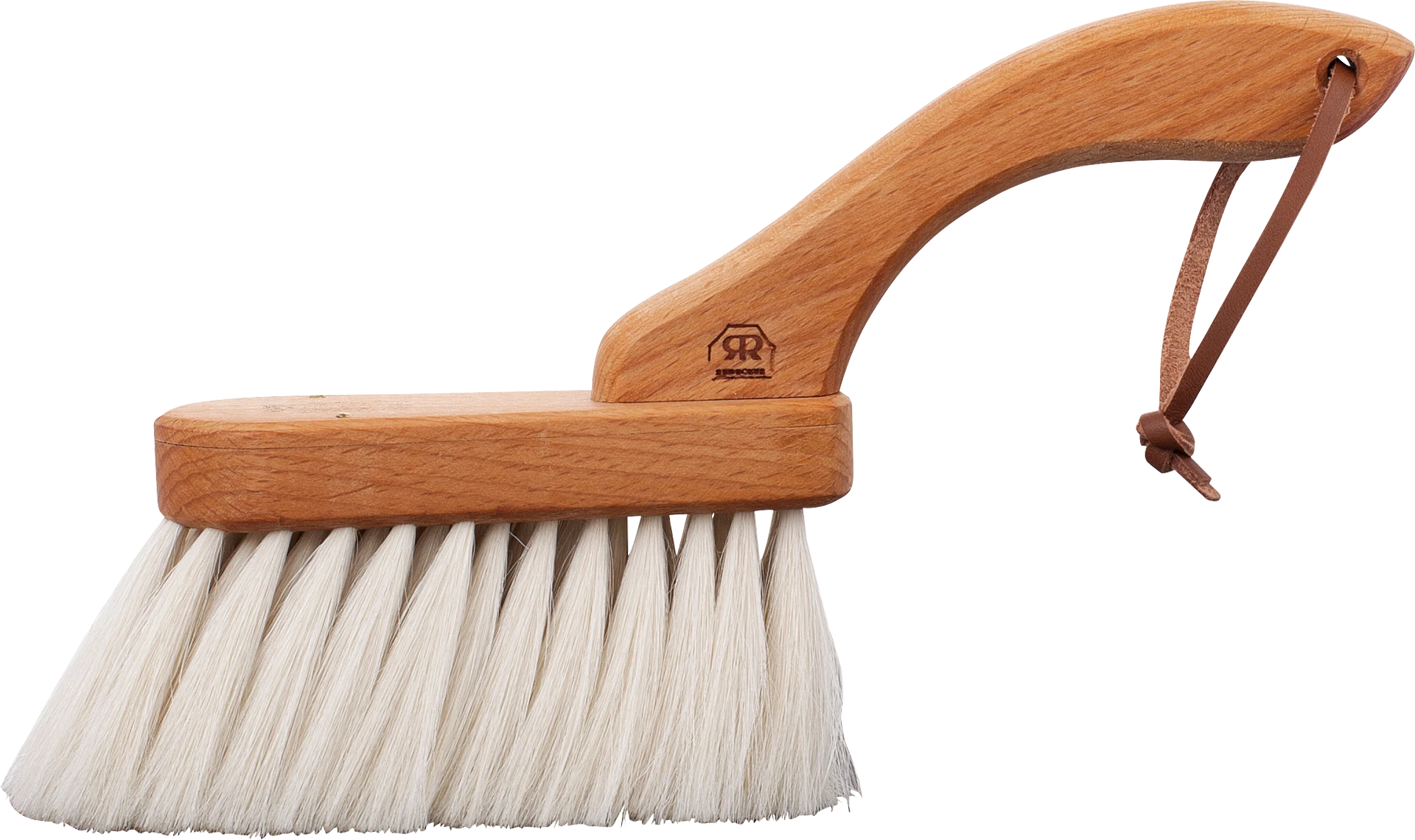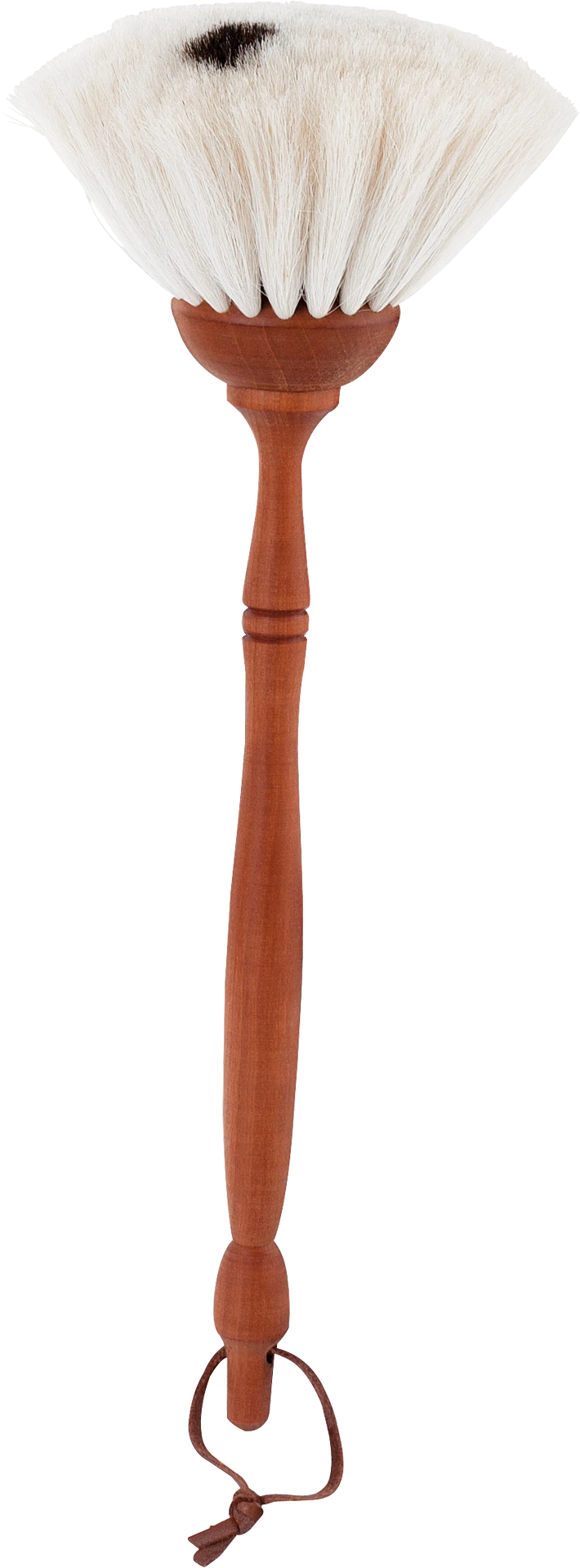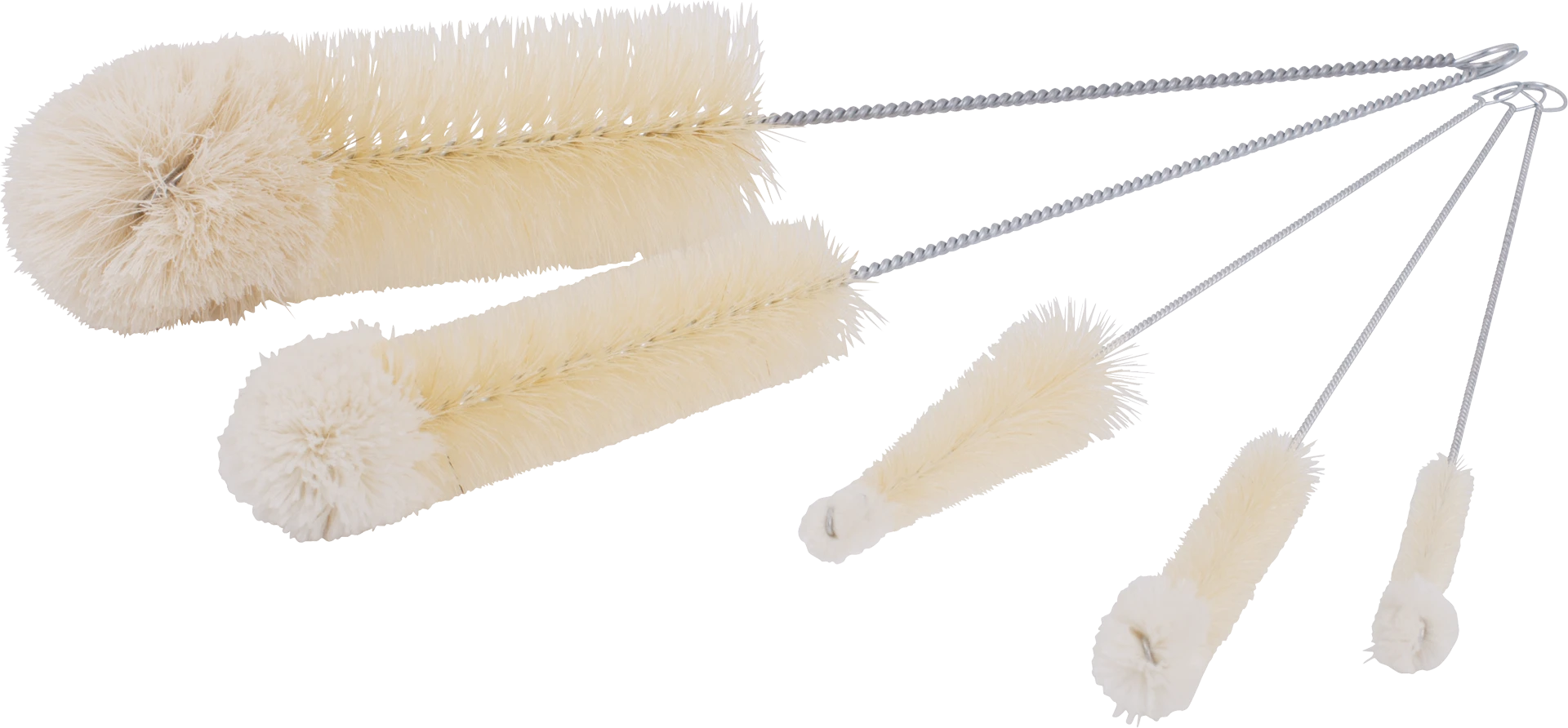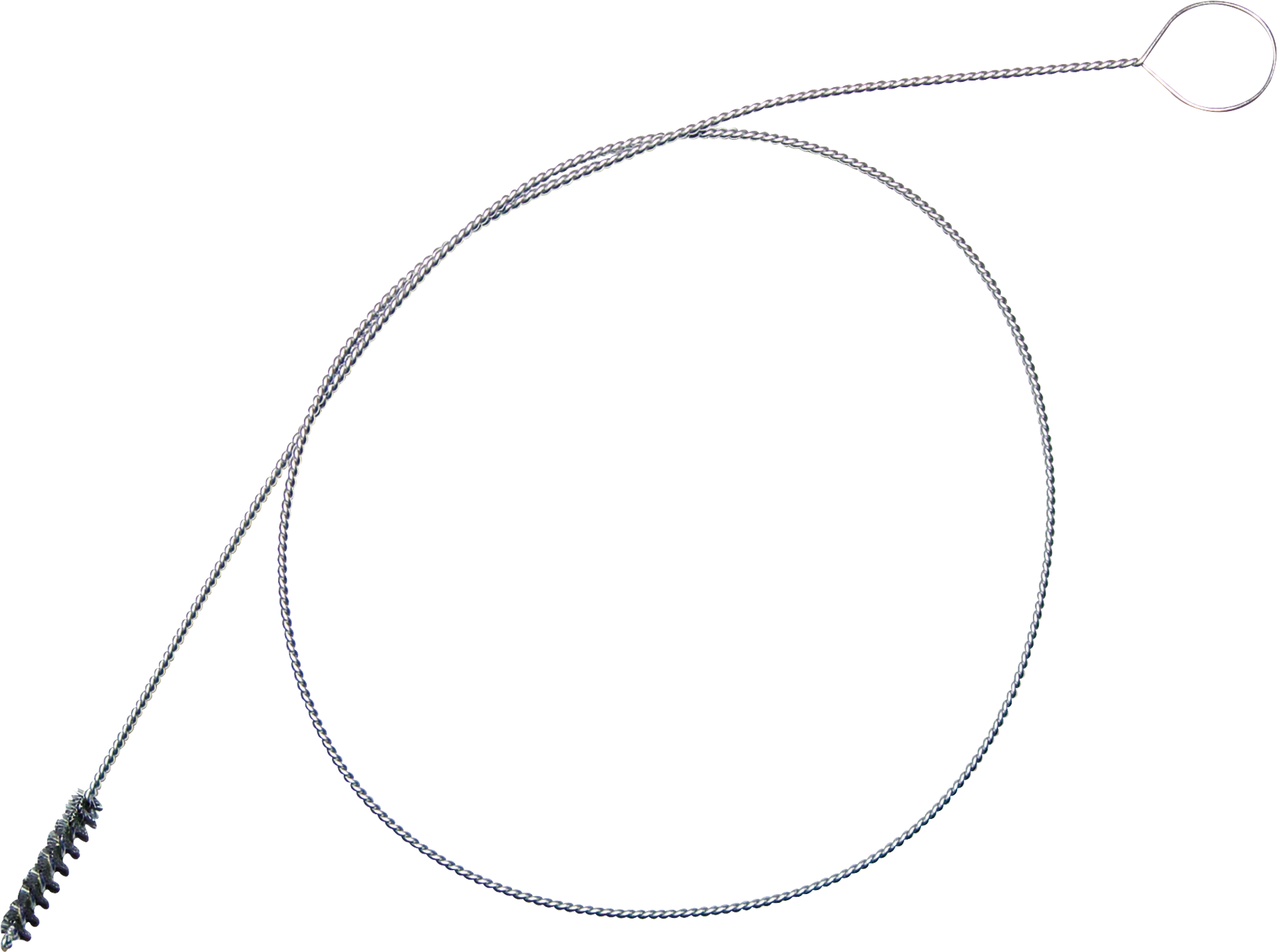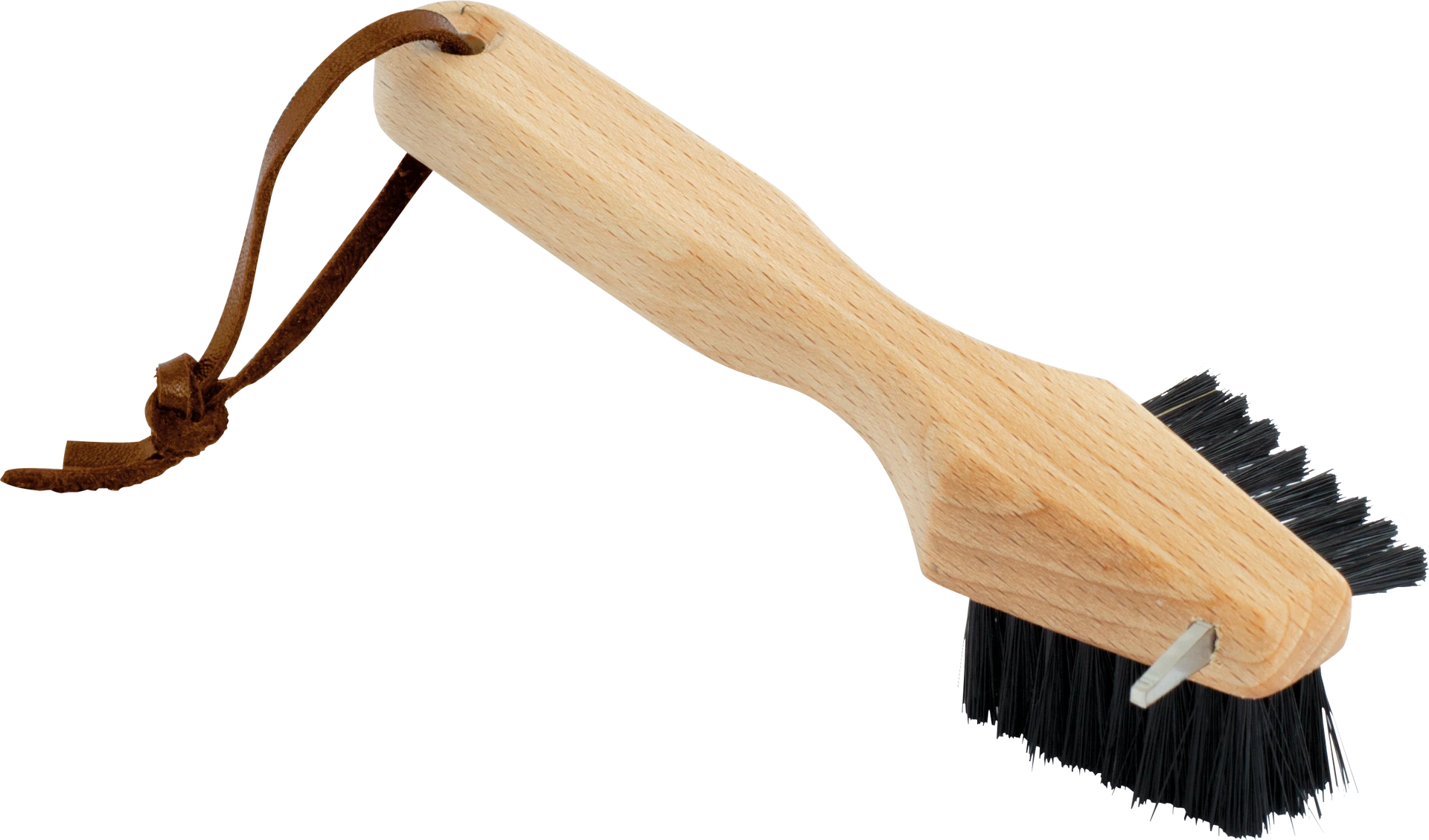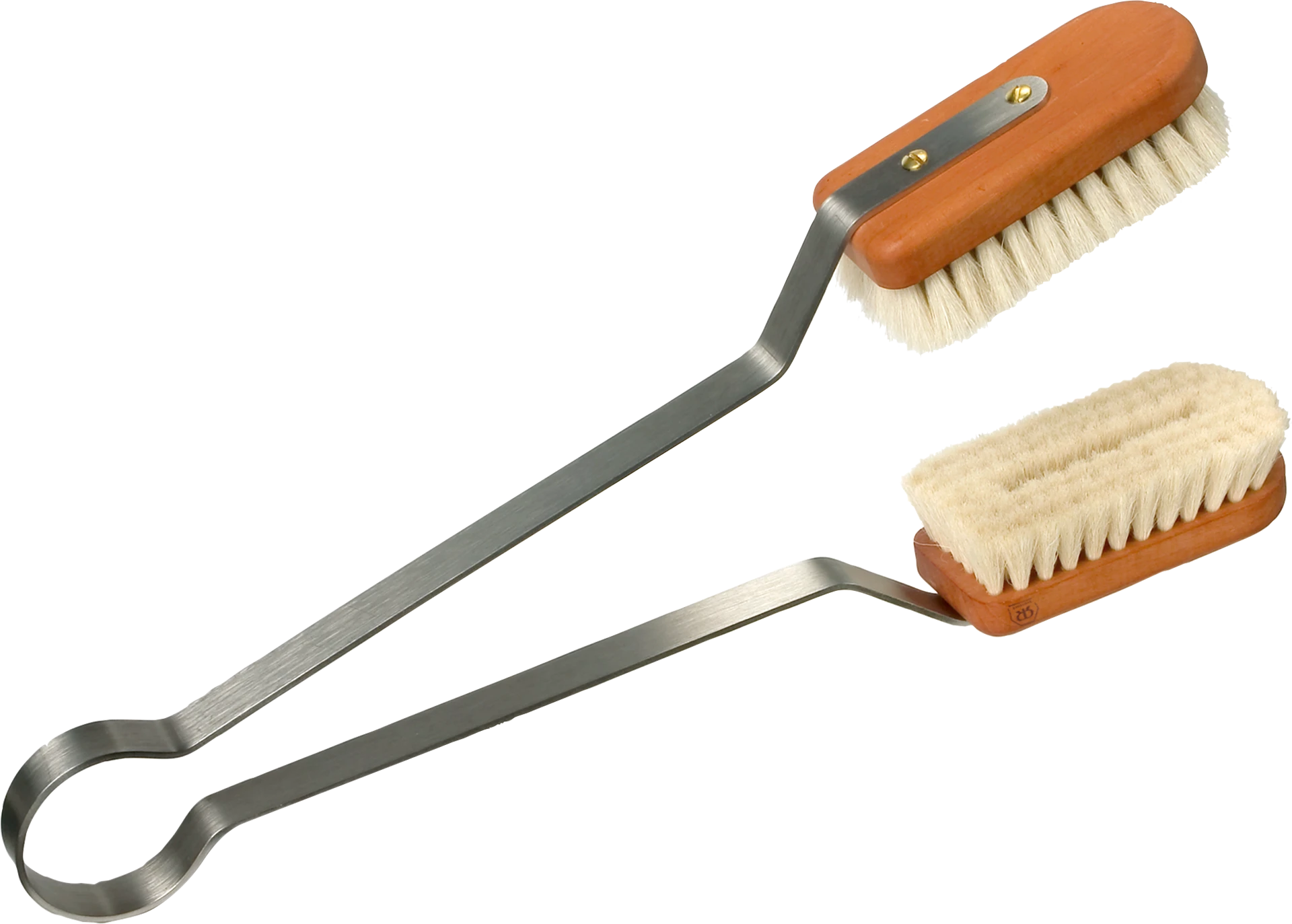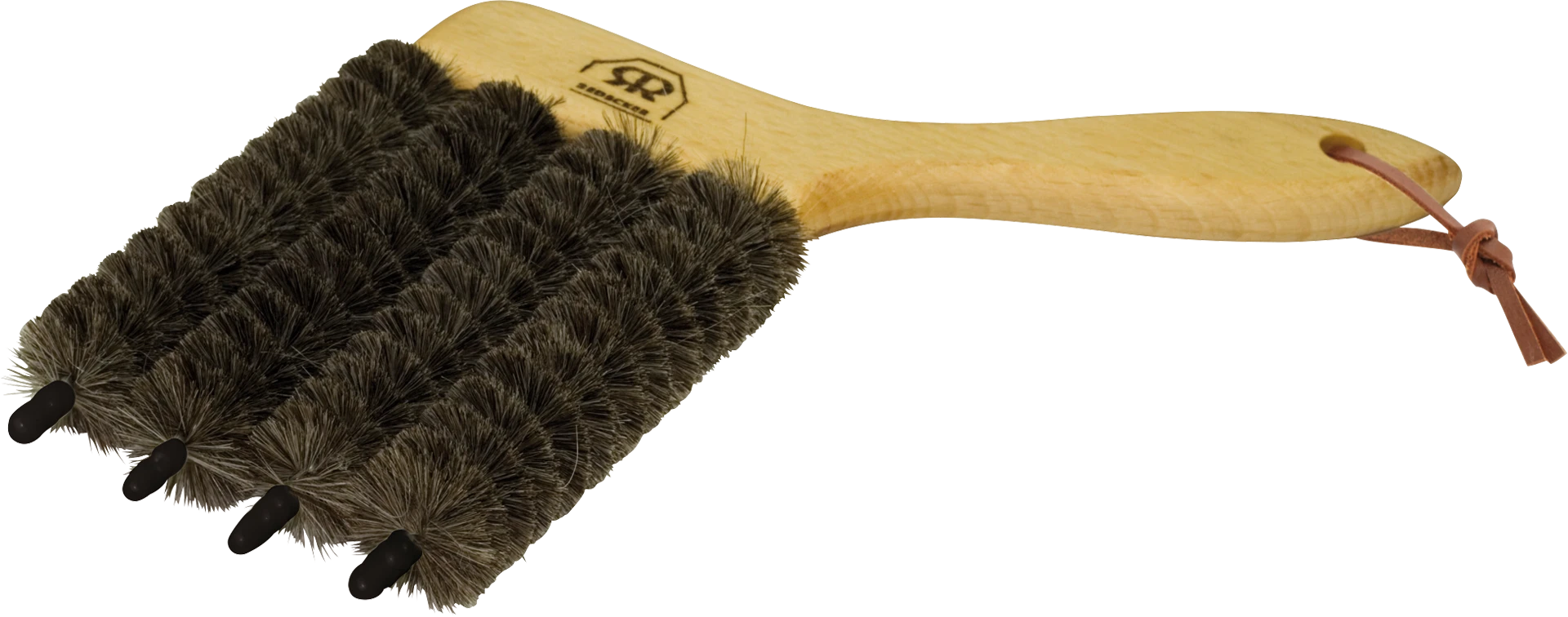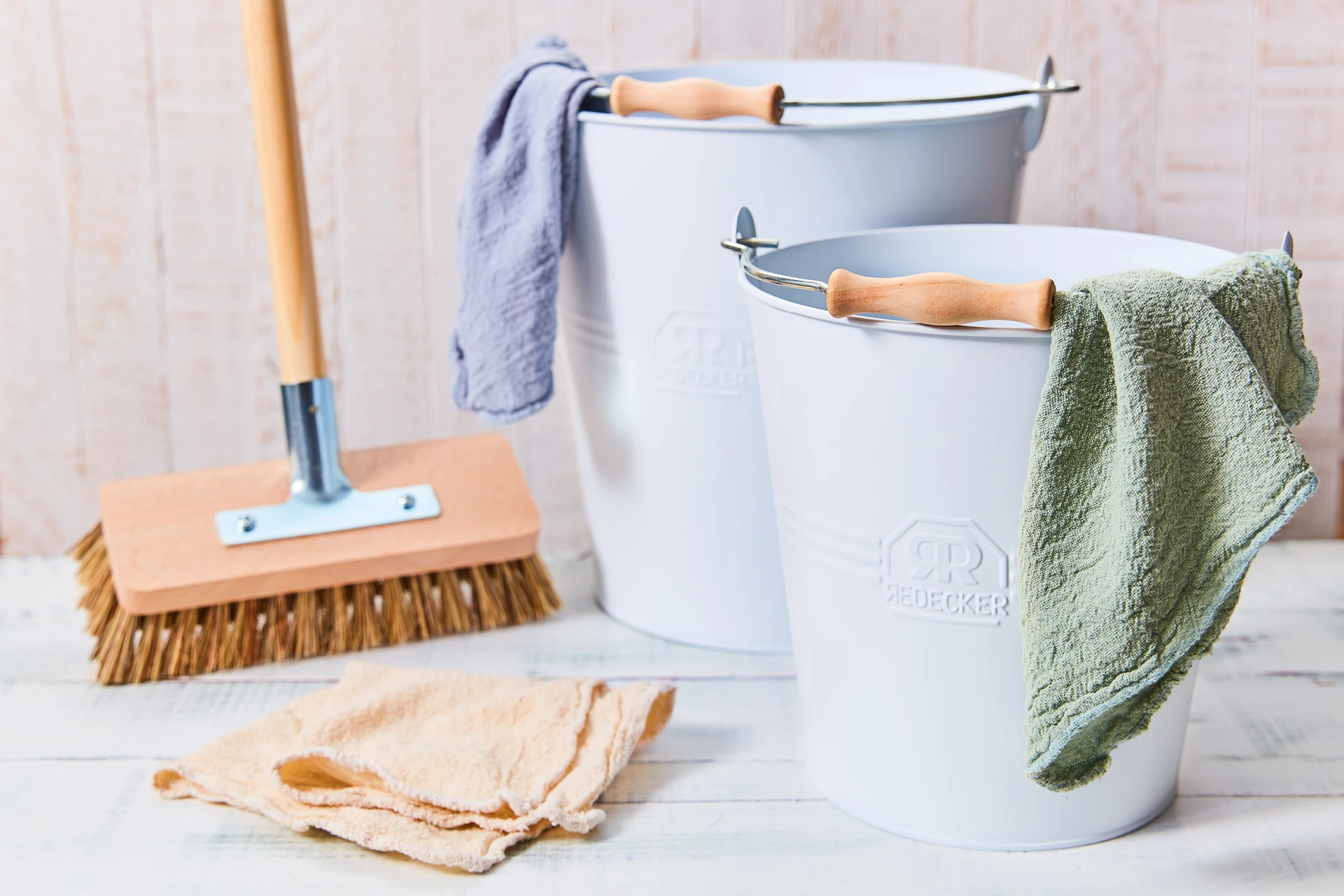
Brooms and brushes have been used since ancient times and probably much longer, as archaeological finds prove. The first were probably simple bundles of brushwood or stalks for sweeping surfaces or brushing off objects. Throughout history, brushes have proven to be perfect tools in many areas and have been used in some cases for centuries - a good example of this is the chimney sweep ...
Brushes are more suitable than sponges, scouring pads or cloths for many household cleaning purposes. Why? The dense filling of bristles, fibers or hair ensures intensive cleaning, but does not absorb dirt permanently, it simply releases it again. The simplest example: the dishwashing brush, which really should be in every household. Its principle: dense horsehair bundles or bristles clean surfaces particularly thoroughly. Bathtub brushes and clothes brushes also use this principle. The latter are particularly useful because they can comb and smooth or straighten textile fibers at the same time.
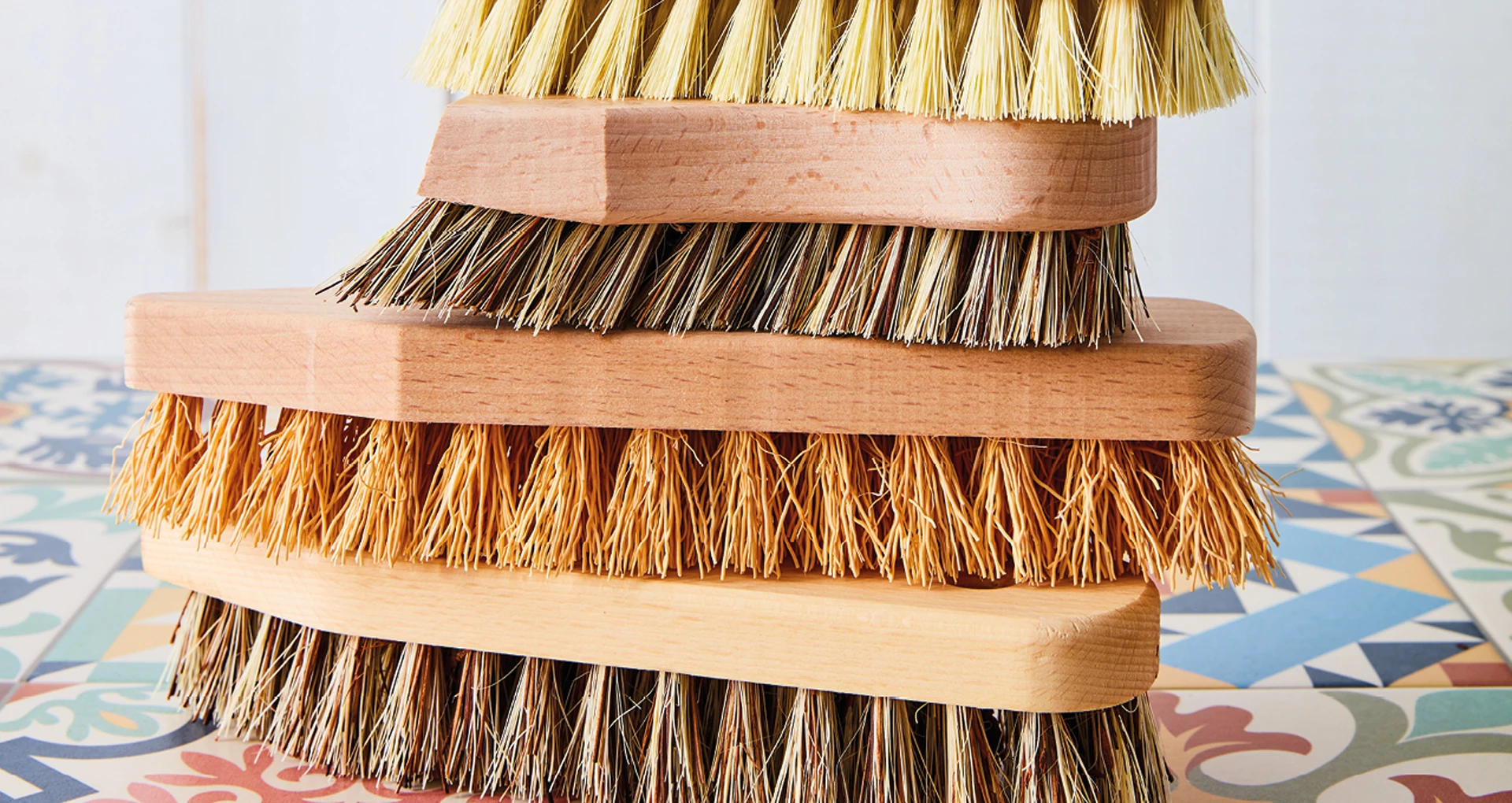
What do I really need?
For really tough jobs, there are scrubbing brushes with union or fiber trims. They are wet-resistant, reliably remove even hard encrustations and are ergonomically shaped. They are available for floors, pots and dishes, but also for vegetables, e.g. for cleaning potatoes and other root vegetables. We always have at least two or three of these brushes in our kitchen, one for each purpose.
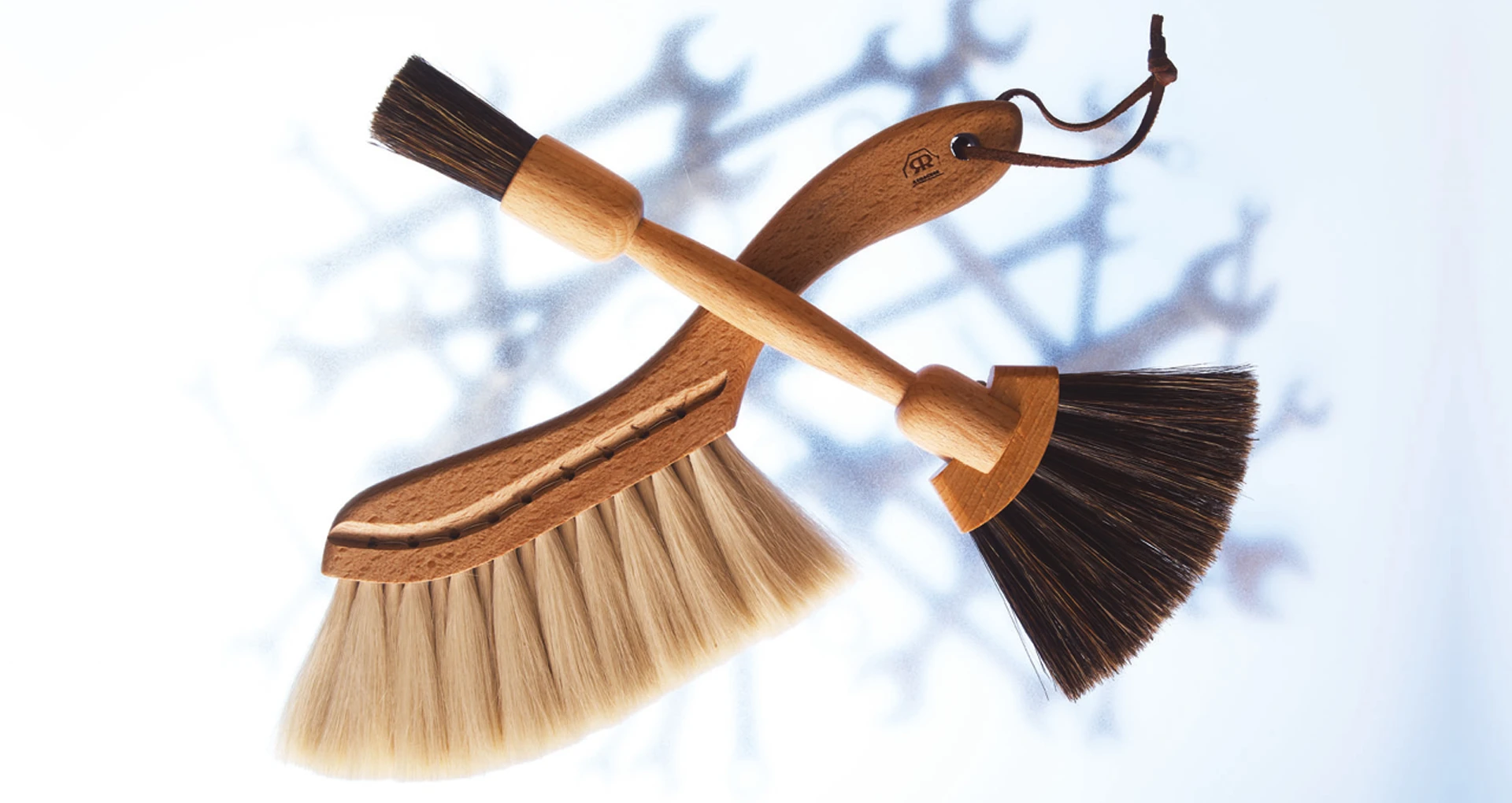
The gentle helpers
Other brushes are equipped with goat hair or other particularly soft hairs and are suitable for the “soft” jobs in the household: removing dust from surfaces and objects. The advantage: such brushes and paintbrushes pick up dust in their dense fill and then simply release it again when shaken out. Ostrich feathers are particularly good helpers here: they attract dust almost magically and make dusting much easier. They are far superior to synthetic fibers or dust pads!
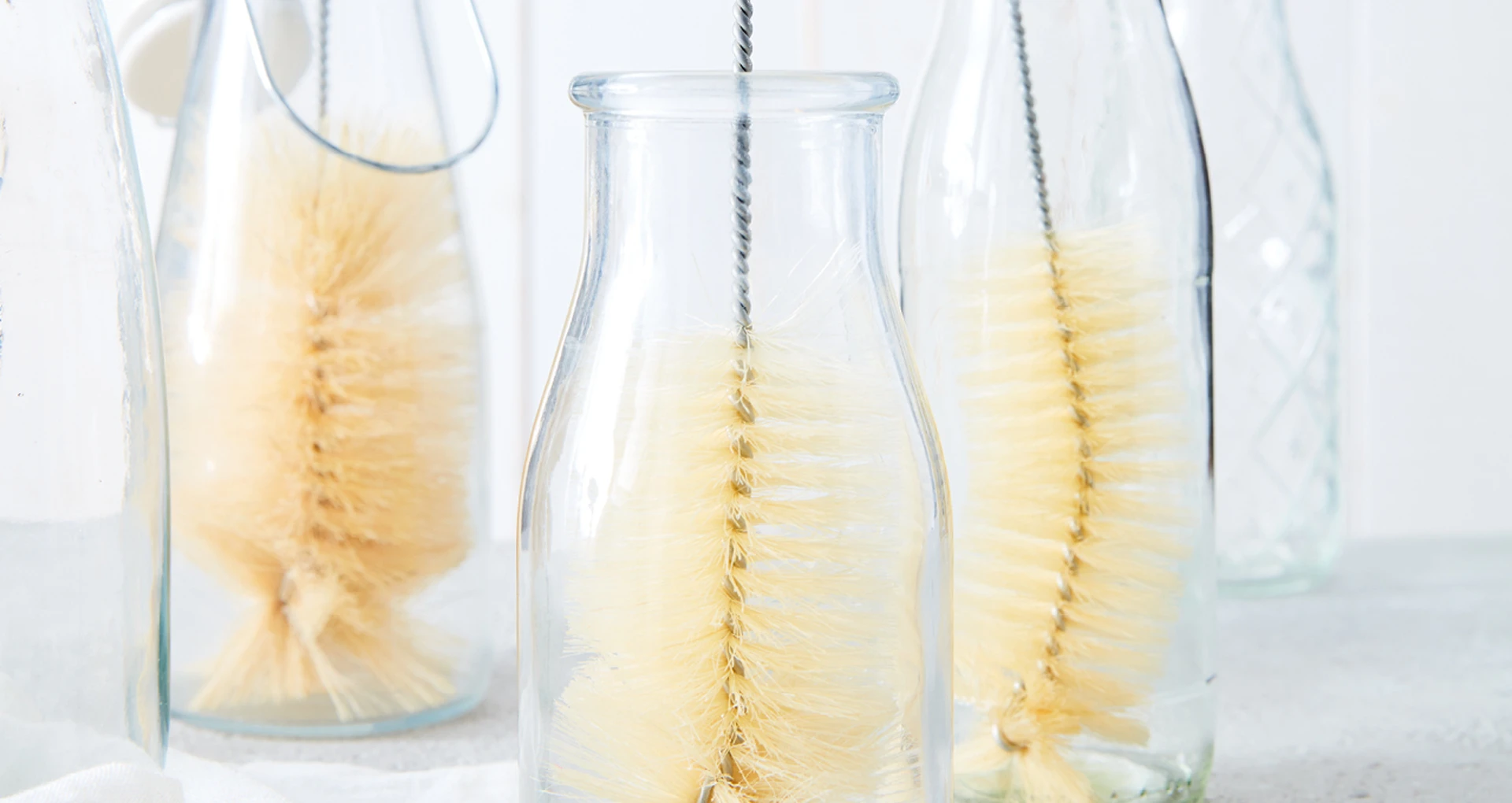
The specialist brushes: Real professional tools!
Our specially shaped brushes also make it possible to clean complicated contours, corners and containers: first and foremost our twisted bottle brushes, which are available for many different purposes: From the simple bottle brush with a cotton tip to special shapes for smaller bottles and the wafer-thin milk frother tube brush, which is also good for drinking tubes on bicycles or hiking rucksacks. The back cupboard brush with its elongated, narrow shape is also an invaluable helper if you don't want to constantly move cupboards and chests of drawers away from the walls.
And finally: Ingenious inventor brushes
Other special brushes are genuine inventions and meet a specific need: the small and lightweight hiking boot brush removes mud and dirt from shoes and also has a short metal spike to remove stones from the tread.
The leaf brush is great for anyone who has a lot of large-leaved plants in their household - brushes like this were used in imperial greenhouses and orangeries more than a hundred years ago. The book brush is also extremely practical: with its hard bristles at the front, it removes stuck dust from shelves and books, while the soft bristles then pick up the dust. There are also special round brushes for cleaning flower pots (very practical!) or even sockets (insider tip!). All these special helpers have one thing in common: they do their job perfectly - faster and more thoroughly than any other tool! We can think of even more specialists that everyone should own: The Venetian blind brush, for example - ingeniously simple and simply ingenious. And the Redecker radiator brush, of course... how else can you get classic radiators clean?
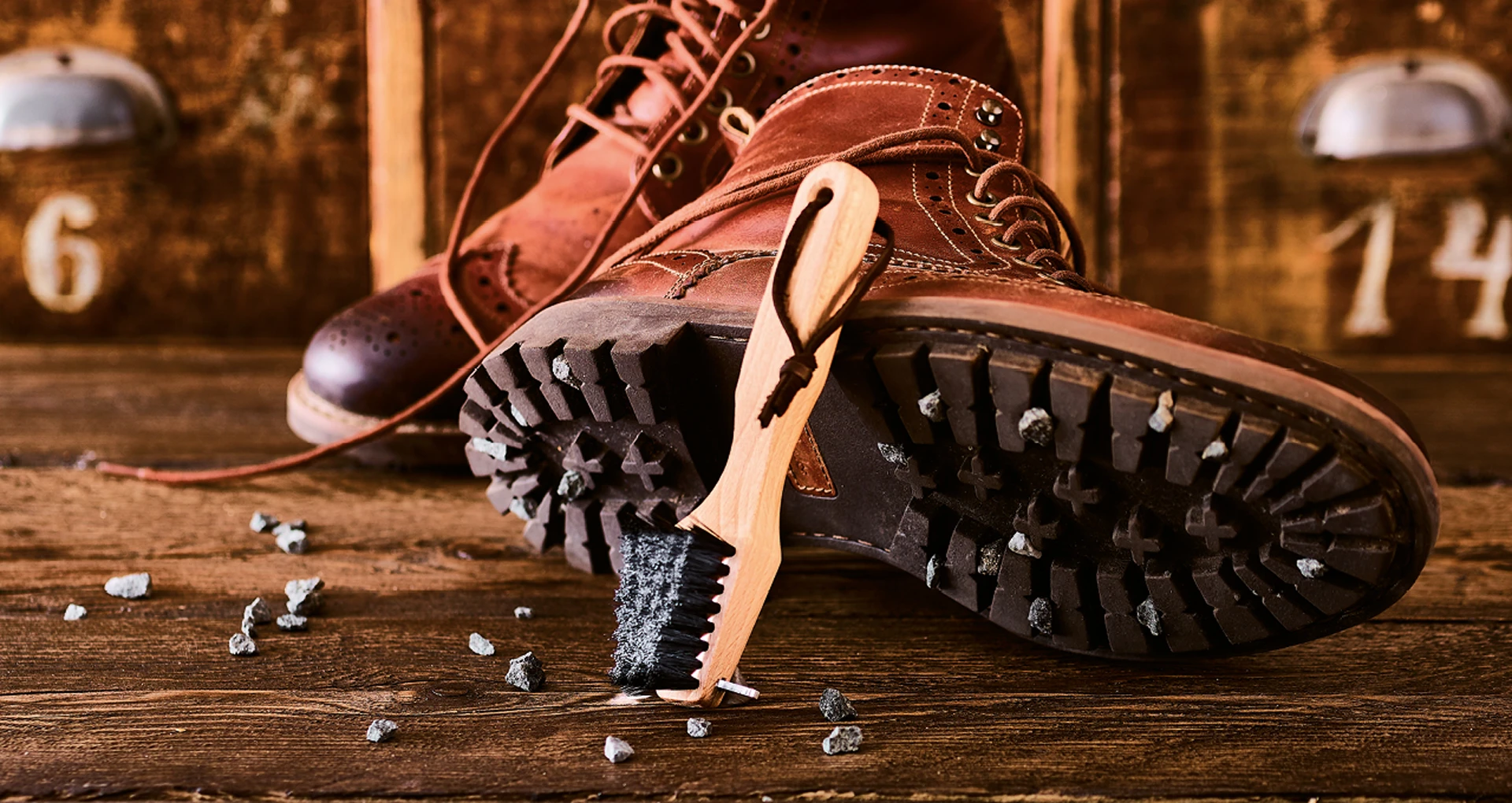
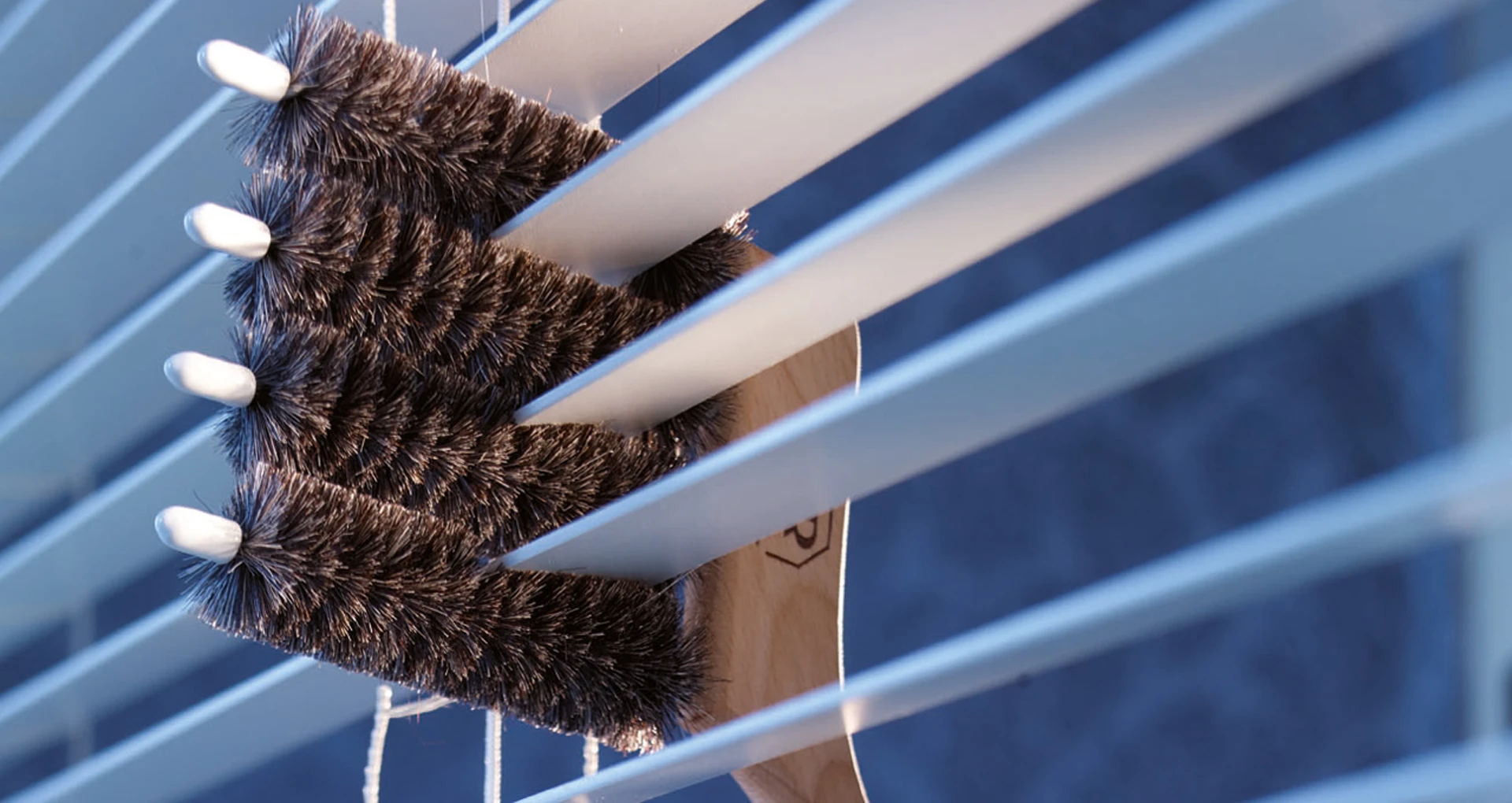
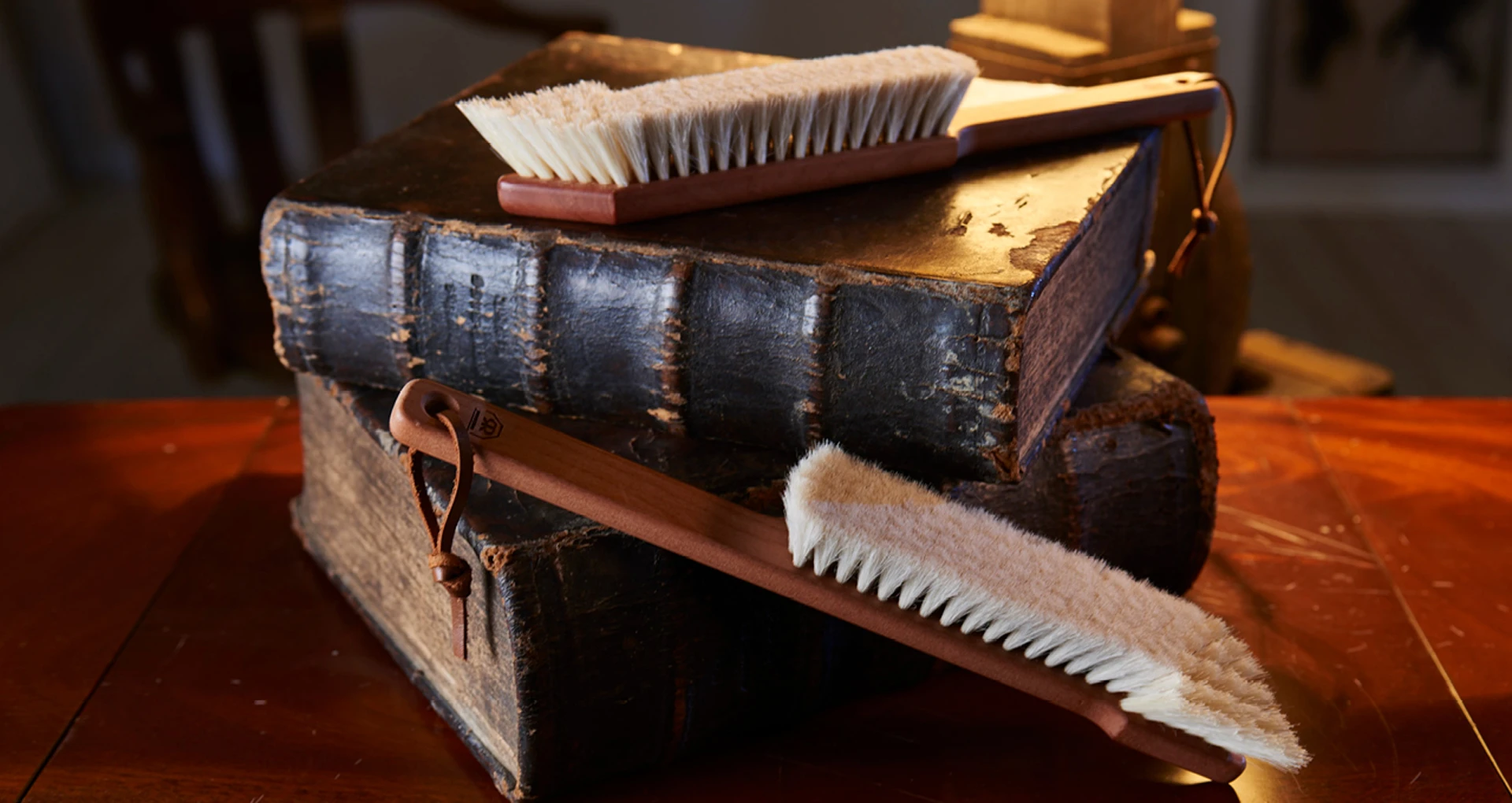
Nevertheless, each brush can be used for many different tasks and always has more than one purpose. For example, we have often used the snow brush to brush off large areas outside or for the tent tarpaulin!
Brush makers know exactly which fiber or bristle is particularly suitable for which purpose - you can find a brief overview here in our small brush guide. The variety and richness of nature is practically unlimited and has the right material for all household tasks. In addition, there is always the choice of the right wood for the brush body: fine or robust, oiled or thermally treated against moisture sensitivity. Feel free to write to us here or on social media about how you use our brushes - and whether you have perhaps discovered one or two new uses for them - we look forward to hearing from you!

